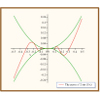Analysis and Geometric Analysis Seminar
In this talk, we revisit the famous Zagier formula for multiple zeta values (MZV's) and its odd variant for multiple $t$-values which is due to Murakami. Zagier's formula involves a specific family of MZV's which we call nowadays the Hoffman family,
$$\displaystyle H(a, b)=\zeta(\underbrace{2, 2, \ldots, 2}_{\text{$a$}}, 3, \underbrace{2, 2, \ldots, 2}_{\text{$b$}}),$$
which can be expressed as a $\mathbb{Q}$-linear combination of products $\pi^{2m}\zeta(2n+1)$ with $m+n=a+b+1$. This formula for $H(a, b)$ played a crucial role in the proof of Hoffman's conjecture by F. Brown, and it asserts that all multiple zeta values of a given weight are $\mathbb{Q}$-linear combinations of MZV's of the same weight involving $2$'s and $3$'s.
Similarly, in the case of multiple $t$-values (the odd variant of multiple zeta values), very recently, Murakami proved a version of Brown's theorem (Hoffman's conjecture) which states that every multiple zeta value is a $\mathbb{Q}$-linear combination of elements $\{t(k_{1}, \ldots, k_{r}): k_{1}, \ldots, k_{r}\in \{2, 3\}\}$. Again, the proof relies on a Zagier-type evaluation for the Hoffman's family of multiple $t$-values,
$$\displaystyle T(a, b)=t(\underbrace{2, 2, \ldots, 2}_{\text{$a$}}, 3, \underbrace{2, 2, \ldots, 2}_{\text{$b$}}).$$
We show the parallel of the two formulas for $H(a, b)$ and $T(a, b)$ and derive elementary proofs by relating both of them to a surprising cotangent integral. Also, if time allows, we give a brief account on how these integrals can provide us with some arithmetic information about $\frac{\zeta(2k+1)}{\pi^{2k+1}$. This is a joint work with Li Lai and Derek Orr.
